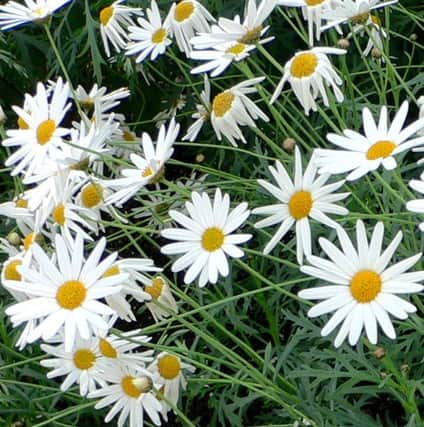Delicate daisy


It grew so well that he thought if might have to be cut back because it was threatening to overshadow a few of the less-invasive plants, but during the sneaky cold spell last month, some of its leaves were damaged by the frost.
It still seems to be alive, but now my neighbour is worried that future frosts will repeat the havoc. What’s he to do? Should he leave well alone and let Nature take her course or should he try to protect his beloved plant by wrapping it in newspaper or horticultural fleece whenever there’s a frost warning on the TV?
Decisions, decisions...
Advertisement
Hide AdAdvertisement
Hide AdFirst of all, it helps to know your plant. Argyranthemum, aka the marguerite daisy, is a compact but vigorous evergreen shrub which produces lovely white, daisy-like blooms for weeks on end during the summer.
But here’s the rub – unfortunately, come autumn, it’s best to find somewhere frost-free for it to overwinter because it isn’t fully hardy.
That’s why many people grow marguerite daisies in containers, feeding and watering them during the summer months and then putting them into a frost-free greenhouse or conservatory during the winter.
Hopefully, the shrub across the road will recover to produce those super flowers and interesting blue-grey leaves which, in some milder parts of the country, will remain unscathed all year round.
Advertisement
Hide AdAdvertisement
Hide AdMarguerite daisies are native to Madeira and Canary Islands and are best grown in a sunny site and in well-drained soil.
To keep them compact (three feet high and wide is usually the norm), pinch out the stem tips. Dead-heading regularly will also encourage more blooms. Prune, if necessary, in early to mid-spring.
Normally, the marguerite daisy isn’t very long-lived but propagation isn’t too difficult.
For something a bit more unusual, there’s a cut-leaved variety called frutescens, and a lovely soft yellow (‘Jamaica Primrose’) and a very unusual pink (‘Vancouver’).